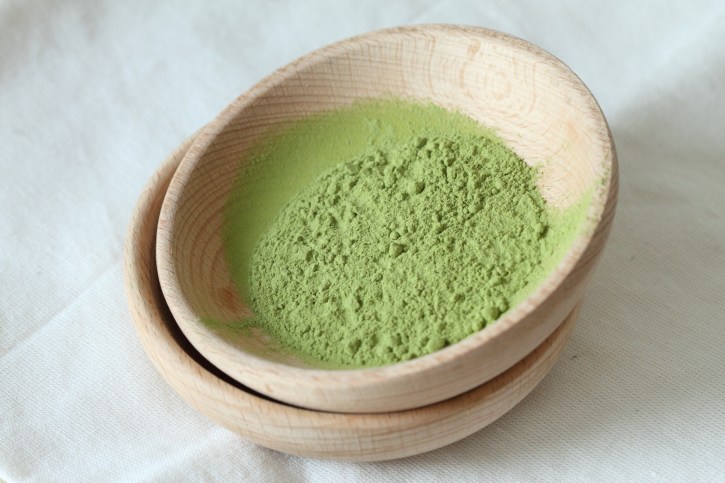How to Control Food Cravings with Mindfulness
Don't Just Wing It on Will-Power - Develop Craving Control Skill-Power Instead
Staying away from foods that trigger you to crave and overeat is called stimulus control (or trigger control). This age-old "people, places and things" avoidance strategy has limited utility. Let's face it: food is the legal drug, it's everywhere, we can't quite run away from it. The world is booby-trapped with craving land-mines! So, what are we do with all these cravings?! Grit our teeth and white-knuckle our way through them?! Rely on Will-Power?! Perhaps...
Alternatively, you can try to cultivate Craving Control Skill-Power - i.e. craving control skills that will help you diffuse a craving land-mine once you step on it.
Not All Craving Control Strategies Are Created Equal
One of the most common and most intuitive craving control strategies is distraction. The strategy of trying to not think about eating often backfires since not thinking about something usually means thinking about it even more. Self-talk, another traditional craving control strategy, involves the use of self-motivational statements that reiterate the benefits of sticking to a plan and remind the person of his or her health goals. Self-talk, in its reliance on logic and reason, is of limited utility: craving is an emotional state that takes the otherwise rational brain and reduces it to irrational simplicity. Rational self-talk is hard to pull off when your mind's wisdom has been reduced to a nutritional tantrum of "I want!" Breath-based relaxation for craving control is an improvement on either distraction or self-talk as it allows the craving-aroused mind to return to its rational baseline. Mindfulness, as a craving control technique, involves "just witnessing" or "just noticing" craving thoughts as they pass. Mindfulness has received much clinical attention, particularly in the area of substance use treatment where the goals of relapse prevention closely parallel the challenges faced by chronic overeaters (Marlatt, 2002).
In my opinion, mindfulness and relaxation are the first echelon of craving control, followed by self-talk and distraction strategies. But don't just take my word for it: experiment with all four to make an informed choice.
Skill Combinations
There are many ways to combine the four craving control skills. My favorite combinations are mindfulness + relaxation and relaxation + self-talk (note that the order does matter).
Taking the Guess-work Out of Craving Control
Try all four different methods for controlling your cravings and track your impressions on their effectiveness. Doing so will help you take the guess-work out of craving control. This way, instead of trying to improvise a craving control strategy on the fly, in the future you would default to a craving control method that you've tested and found to be effective.
Taking the Exposure Risk
Any exposure to triggers creates an opportunity to practice your craving control strategies. Purposeful exposure accelerates the learning curve. Therefore, two ways to expedite craving control training are imaginary exposure (which involves imagining an eating-related trigger) and in-vivo exposure (which involves actively seeking out real-life eating-related stimuli).
Craving Control through Mindfulness
Mindfulness, as a craving control method, involves two essential mechanisms: a certain kind of attention and dis-identification. Attention can be active or passive, that of an active observer and that of an uninvolved witness. This distinction is easy to understand through the contrast of such verbs as "to look" and "to see." "To look" implies an active visual scanning, a kind of goal-oriented visual activity. "To see" implies nothing other than a fact of visual registration. Say, I lost my house keys. I would have to look for them. But in the process of looking for my house keys, I might also happen to see an old concert ticket. Mindfulness is about seeing, not looking. It is about "just" noticing and "just" witnessing without an attachment or identification with what is being noticed and witnessed.
This latter element is called dis-identification. "To identify" means to relate, to draw a sign of equality between yourself and something else. When we are experiencing a craving, there is a risk of getting lost in it, becoming overwhelmed. And yet cravings come and go. For us to identify with something that is inherently transient and fleeting is to lose our sense of self, a sense of our immutable continuity. This kind of identification with something impermanent is what imbues craving with its suffering. Mindfulness allows us to recognize that a craving is but a part of the overall experience, a transient, fleeting state of mind, not the mind itself. Mindfulness practice teaches you to realize that this thought, this feeling, this sensation (whatever it might be at any given moment) is but an object inside your mind, no more significant than a paper cup on your kitchen counter. Yes, it is a part of you, but not all of you. A craving is no more a part of your mind than a reflection of your face is a part of the mirror. And that's exactly why you can "just" notice it, "just" see it without having to stare at it.
Mindfulness, as a craving control method, is less effortful than the other methods. Unlike distraction, you are not pushing thoughts of food aside. You are letting go of any attempt to block them, and instead you are letting them in and just noticing them as thoughts and sensations. Unlike self-talk, you are not trying to change your mind, you are accepting your mind as just mind. Unlike relaxation, you are not trying to calm yourself down from the excitation of the craving, you are calmly accepting your excitation as just a part of the craving. In sum, mindfulness is a form of controlling by letting go of control.
Craving Control Exercise 1: Counting Craving Thoughts
Next time you have a craving, pop into the nearest restaurant and order a cup of tea but keep the menu. Look around, smell, read at the pictures in the menu, and watch your mind. Notice the craving thoughts, the food-related thoughts of desire. Each time you notice a craving thought, mark down a dot on a piece of paper. Spend at least five minutes watching your mind like this while marking down dots, one after another. As you do this, you might compare your mind to a stream or a river, and yourself to a dispassionate observer sitting on the bank of this river, watching the craving thoughts pass down the stream, staying put where you are, without getting carried away. As you watch these cravings come and leave, take a note of your mindful presence in this moment: here you are, just noticing the craving thoughts, not going anywhere, staying in the moment, not fleeing, unafraid. Finish the exercise by counting the craving thoughts. Ponder the result: you have controlled all these craving thoughts by not controlling them, just by being non-reactively aware of them enough for them to pass. Congratulations! Practice this at home (staring at a food you like). Should you satisfy your cravings after you have mindfully managed them? That's really for you to decide.
Craving Control Exercise 2: The Mind Lava Lamp
I am sure you've seen a lava lamp. If not, let me describe one. It's a sealed see-through container with a glob of wax submerged inside a liquid. As the liquid warms up from the power source, the wax melts and begins to float up and down morphing into various shapes. The mind is like a lava lamp. Close your eyes right now for a moment and notice your thoughts, feelings, and sensations. All of this mind content is not unlike a glob of wax that moves and morphs from one form to another. Your awareness of this content is not unlike the liquid inside the lava lamp that surrounds the ever-changing glob of wax. And then there is you - the container of all these mental gymnastics. Borrow or purchase a lava lamp. In the weeks to come, spend some time watching it. Turn on the lava lamp and just sit and watch. First, watch the glob of wax come to life. Notice it morph and change. Then, after a while, watch the liquid that surrounds the glob of wax. Watch it remain the same. Then, close your eyes and watch your "mind lava" - the thoughts, the feelings, and the sensations; the content of your mind. Allow yourself the realization: "Wow, all these thoughts and feelings inside of me... Here's one... Here's another one..." Then, after a while, become aware of your awareness of this "mind lava." Allow yourself the realization: "Here I am, being aware of my thoughts and feelings coming and going... These thoughts and feelings are just like an ever-morphing glob of wax inside the liquid of my conscious awareness. And while these thoughts and feelings morph and pass, I - the I that is aware of all this internal commotion - remain the same..." Rest assured: if you feel confused, you're actually on the right track. Just go ahead and watch the mind lava flow past you.
After practicing this mindfulness exercise, you will be in a better position to "just notice" your craving thoughts as they pass through your mind, without needing to act up on them.
Craving Control Exercise 3: It's Just a Craving, For Crying Out Loud!!!
For those of you who might feel that all this discussion of mindfulness is a bit too esoteric, here's a chance to get real. Let's practice mindfulness bravado! Now, a caveat for those of you who are serious practitioners of mindfulness: this exercise (unlike the two exercises above) is not an actual mindfulness experience. Technically, it's a mindfulness + self-talk strategy that capitalizes on your success with the use of mindfulness as a craving control. Here's what I mean. Set yourself up to have a craving (I am sure you know how). As soon as you have a craving, first, put on your calm mindfulness cap: notice, don't identify. Think: "This is just a craving, I am not a craving, this craving is just a part of me, a fleeting, transient, ephemeral, insignificant part of me, not even worth my attention." Then, add a touch of mindfulness bravado: do not "just" notice, notice with the kind of scorn that does justice to the insignificance of this mental event. After all, it's just another craving, one of thousands. And, indeed, where's the crisis? Who's on fire?! You've been through this before: it's just the same old banal stimulus-response connection in your brain. You saw something, it triggered you to crave, so here you are, having a craving thought. Feel the scoff, throw in some attitude: "A craving... whoop-tee-doo! So what if it lasts?! Have I ever had a craving that didn't go away?! Of course not! This too shall pass. Craving, my ass!"
Be well!
Pavel Somov, Ph.D., author of EATING THE MOMENT: 141 Mindful Practices to Overcome Overeating One Meal at a Time (New Harbinger, 2008)
www.eatingthemoment.com
-
How To Determine If You Have A Healthy Weight Range?
If you wish to stay and live healthy, then you are advised to watch yo
-
Personal Training Helps Overweight Children Get Healthy
Obesity is a serious issue facing children today. Inactivity due to te
-
Successfully Burn Fat For A Leaner Body
For any person attempting to lose weight
-
Why Do Water Aerobics Routines
Cardiovascular exercise is an excellent way for you to maintain your w
-
10 Ways To Gain Muscle
1. FUEL UP Start reading food labels to get a sense of how many cal
-
5 More Nutritional Tips To Burn Fat
This article will give you 5 more tips to turn your body into a lean m
- DON'T MISS
- Weight loss and healthy fat diet improve cholesterol
- Learning About the Life of Richard Simmons
- Which Are The Best Weight Loss Supplements?
- Weight Loss Secrets That Work
- The Spiritual Component Of Weight Loss
- How To Prepare For Liposuction
- A Gastric Band Can Sometimes Be A Life Band
- Everything You Need To Know About Liposculpture
- Free Cabbage Soup Diet Recipe Suggestions
- Hating Your Belly Fat? Cortisol, Sleep, and What They Have In Common




